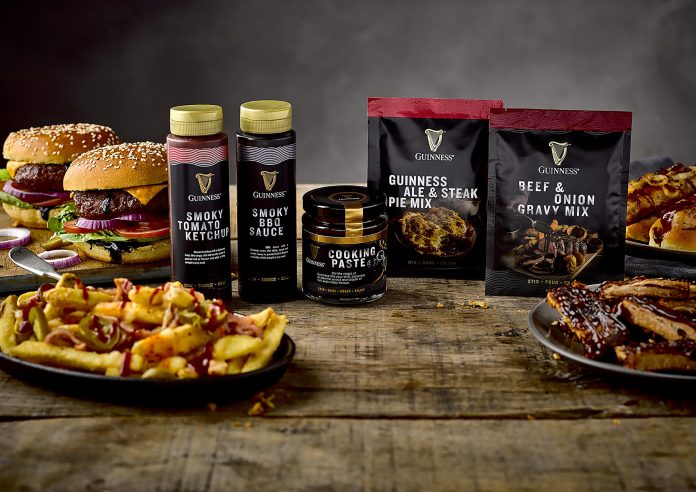Scott Dixon discusses brand heritage, innovation and a recent collaboration with Diageo that has resulted in hundreds of thousands of new customers engaging with Guinness through food
Step onto a train platform, watch TV, read a magazine and you’ll see countless brands pushing their heritage.
With that heritage comes trust and stability, a huge positive for shoppers – especially those looking to purchase in a new category. The real challenge, however, is how those brands balance all this with modernity, innovation and forward thinking.
History is littered with established brands that fell out of favour because they failed to adapt and change with the times. For an outsider, the perception could therefore perhaps be that heritage and innovation are mutually exclusive.
At The Flava People, we don’t believe this to be the case.
To begin with, we are ourselves a brand with history and heritage, yet we call ourselves ‘a 50 year old startup’. Why? Because while our history means we have an incredible wealth of references, resources, and industry knowledge to draw from, we have evolved our offer and our products, and the way in which we work. Our team are hungry for innovation and excitement, and we have an appetite for working with partners to bring products with a twist to the table, helping consumers create game-changing dinners.
Being able to combine heritage and innovation takes a lot of hard work behind the scenes, bringing together everyone from the NPD team to the marketing department. It is a real skill, and one that we’re only beginning to understand and delve into. When brands succeed in getting this careful balance right, however, it not only drives the brand’s own innovation forward but has a ripple effect across the entire industry.
Guinness is a prime example of this. Since beginning its brewery business in 1759, the brand has constantly innovated to keep its signature flavour and brand relevant. Today, Guinness is the most popular pint in Britain, with the iconic Irish stout accounting for one in every nine pints pulled in the UK. They have, to all extents and purposes, been able to maintain the heart of the product without huge amounts of change, but their innovative approach can be felt in their exceptional long-term and forward-thinking marketing strategy which is helping to change perceptions and introduce the brand to new people.
What’s more, their success has transcended beyond the perfect pint, bringing innovation and excitement into countless new categories: from coffee, crisps (below), chocolates, cakes and clothing – to our own range of Guinness seasonings and sauces, developed with the Diageo development team.

These unique products open up an entirely new audience, making the brand visible and relevant at more food and drink occasions (from BBQ’s to Sunday Roasts), allowing them to continue to raise awareness and grow their market share.
When we started working with the Guinness team, we were aware of the brand’s proud history with food. The flavours of Guinness have long been used in recipes – and as a pairing drink. In addition, Guinness has an intensely loyal and protective following, so we knew that nothing, except perfection, would do.
To achieve this, we collaborated closely with the Guinness beer sommelier (yes, that’s a thing!) and their team of chefs from the Guinness Storehouse. They are an incredibly passionate group who have unrivalled expertise and experience working with Guinness, having incorporated the stout into thousands of dishes. At the same time, they are transparent about their limitations and allowed us to take the lead on market suitability.

Their team naturally follows a rigorous sign-off process for both products and branding/packaging in order to protect the Guinness reputation. They also have some of the best brand guidelines I’ve ever personally worked with, giving us a clear understanding of what would and wouldn’t pass their internal panels. Throughout the project, we interacted with 10-15 people at Diageo, but having one main contact who coordinated everything was incredibly helpful.
The collaboration was not just about adhering to their guidelines, but also about pushing creative boundaries while respecting the Guinness’ legacy. We conducted numerous taste tests and feedback sessions to ensure each product met the highest standards. This approach allowed us to fine-tune our offerings continuously. In the end, our combined efforts resulted in a range of products that not only align with the Guinness brand but also introduce innovative flavours that honour its rich heritage.

Jack Daniels is another drinks brand which has taken its heritage and spun it in order to remain fresh, capturing the best of both sides. Alongside their old no. 7 – the original Jack Daniels product – they have brought new flavours and variants to our shelves and drinks cabinets. Their heritage, however, remains at the heart of their approach – drawing on both stories and tales from their rich and long history and making it relevant and relatable for an audience in 2024. As a brand, they don’t stick their head in the sand and hope for someone to notice them – they look around, see what their consumer wants, and adapt in order to deliver time and time again.
While both of these brands have kept the core product at the heart of their strategy, they find ways to adapt their offer to remain fresh. They listen to, and pay attention to, what their customers are asking for and find ways to deliver – whether that is through a twist on their classics with NPD, or simply repositioning what is already an exceptional product in a new light.
For younger, newer and even prospective brands reading this, it might be a head-in-hands moment. However, every brand – regardless of age – has an opportunity to draw on a back story. We have all drawn inspiration to start our businesses/brands from somewhere. For owners of younger brands, it’s about taking a step back and working out what that heritage story is and bringing it to life.
Consumers still want to try new products; our own research shows that home-cooks are still seeking and prioritising adventurous flavour combinations. There’s a huge appetite to explore and there is plenty of opportunity to be taken advantage of. For new brands it is about not trying to take the established brands head on, but to find a niche they haven’t yet tapped into and claiming that space.
Heritage and innovation can work together, side by side. For established brands it’s crucial to staying alive, and for those fresh to the market it’s about finding their own story to tell.
Scott Dixon is Managing Director of The Flava People





